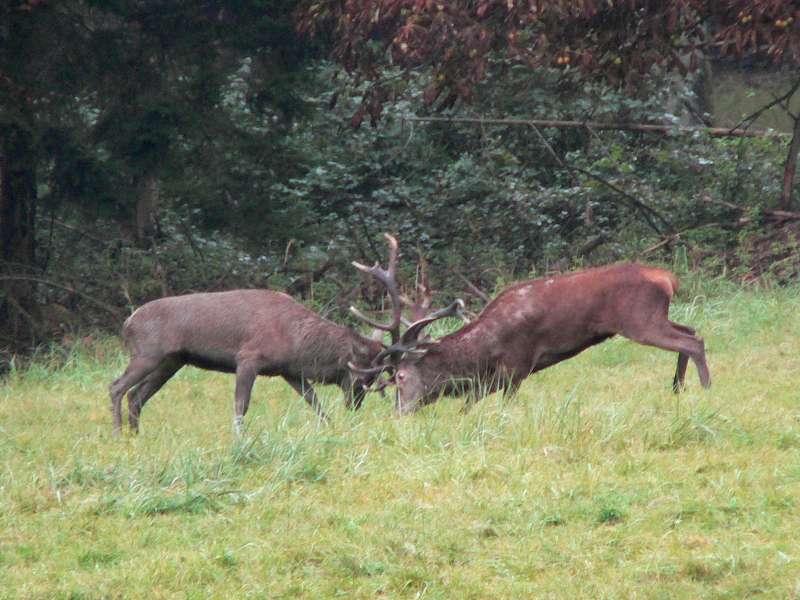|
C-score
In biodiversity studies, the checkerboard score or C-score is a statistic which determines the randomness of the distribution of two or more species through a collection of biome A biome () is a distinct geographical region with specific climate, vegetation, and animal life. It consists of a biological community that has formed in response to its physical environment and regional climate. In 1935, Tansley added the ...s. The statistic, first published by Stone and Roberts in 1990, expands on the earlier work of Diamond that defined a notion of "checkerboard distributions" as an indicator of species competition. A low c-score indicates a higher randomness, i.e. a greater likelihood that the distribution of one species has not been directly affected by the presence of other species. Definition and calculation Given two species ''sp1'', ''sp2'' and ''n'' islands, an incident matrix is built. In the 2 \times n incident matrix, each row represents one of the two species an ... [...More Info...] [...Related Items...] OR: [Wikipedia] [Google] [Baidu] |
Biodiversity
Biodiversity is the variability of life, life on Earth. It can be measured on various levels. There is for example genetic variability, species diversity, ecosystem diversity and Phylogenetics, phylogenetic diversity. Diversity is not distributed evenly on Earth. It is greater in the tropics as a result of the warm climate and high primary productivity in the region near the equator. Tropical forest ecosystems cover less than one-fifth of Earth's terrestrial area and contain about 50% of the world's species. There are latitudinal gradients in species diversity for both marine and terrestrial taxa. Since Abiogenesis, life began on Earth, six major mass extinctions and several minor events have led to large and sudden drops in biodiversity. The Phanerozoic aeon (the last 540 million years) marked a rapid growth in biodiversity via the Cambrian explosion. In this period, the majority of Multicellular organism, multicellular Phylum, phyla first appeared. The next 400 mil ... [...More Info...] [...Related Items...] OR: [Wikipedia] [Google] [Baidu] |
Biome
A biome () is a distinct geographical region with specific climate, vegetation, and animal life. It consists of a biological community that has formed in response to its physical environment and regional climate. In 1935, Tansley added the climatic and soil aspects to the idea, calling it ''ecosystem''. The International Biological Program (1964–74) projects popularized the concept of biome. However, in some contexts, the term ''biome'' is used in a different manner. In German literature, particularly in the Walter terminology, the term is used similarly as '' biotope'' (a concrete geographical unit), while the biome definition used in this article is used as an international, non-regional, terminology—irrespectively of the continent in which an area is present, it takes the same biome name—and corresponds to his "zonobiome", "orobiome" and "pedobiome" (biomes determined by climate zone, altitude or soil). In the Brazilian literature, the term ''biome'' is sometimes ... [...More Info...] [...Related Items...] OR: [Wikipedia] [Google] [Baidu] |
Competition (biology)
Competition is an Biological interaction, interaction between organisms or species in which both require one or more Resource (biological), resources that are in Limiting factor, limited supply (such as food, water, or Territory (animal), territory). Competition lowers the Fitness (biology), fitness of both organisms involved since the presence of one of the organisms always reduces the amount of the resource available to the other. In the study of community ecology, competition within and between members of a species is an important biological interaction. Competition is one of many interacting Biotic component, biotic and Abiotic component, abiotic factors that affect Community (ecology), community structure, species diversity, and population dynamics (shifts in a population over time). There are three major Mechanism (biology), mechanisms of competition: interference, exploitation, and apparent competition (in order from most direct to least direct). Interference and exploitat ... [...More Info...] [...Related Items...] OR: [Wikipedia] [Google] [Baidu] |
Ecology
Ecology () is the natural science of the relationships among living organisms and their Natural environment, environment. Ecology considers organisms at the individual, population, community (ecology), community, ecosystem, and biosphere levels. Ecology overlaps with the closely related sciences of biogeography, evolutionary biology, genetics, ethology, and natural history. Ecology is a branch of biology, and is the study of abundance (ecology), abundance, biomass (ecology), biomass, and distribution of organisms in the context of the environment. It encompasses life processes, interactions, and adaptations; movement of materials and energy through living communities; ecological succession, successional development of ecosystems; cooperation, competition, and predation within and between species; and patterns of biodiversity and its effect on ecosystem processes. Ecology has practical applications in fields such as conservation biology, wetland management, natural resource m ... [...More Info...] [...Related Items...] OR: [Wikipedia] [Google] [Baidu] |


